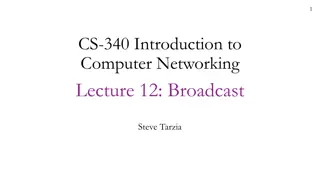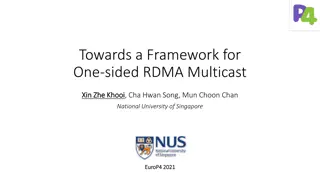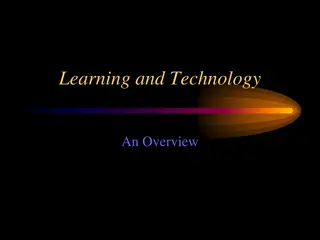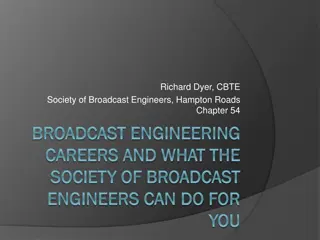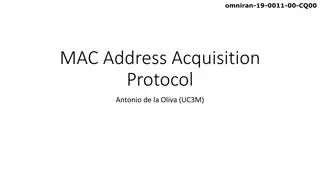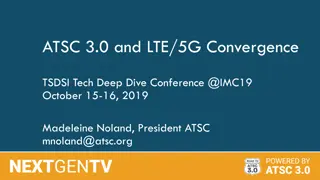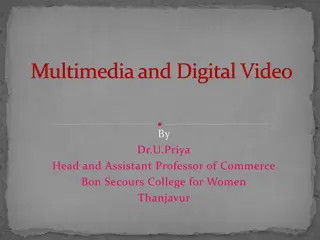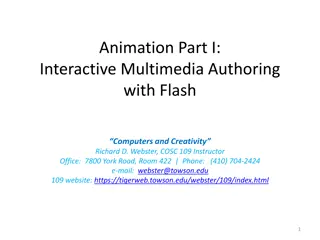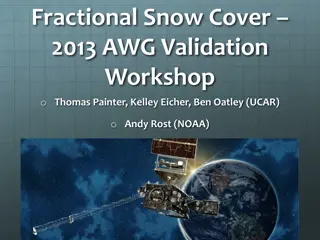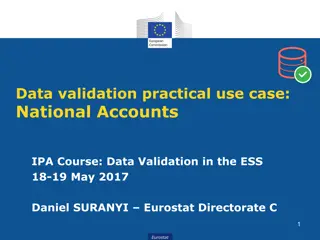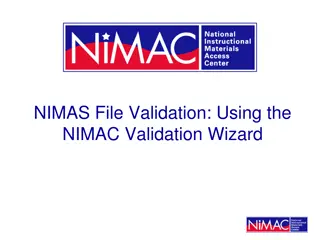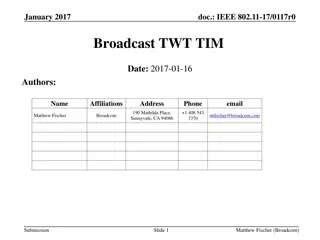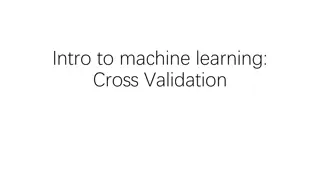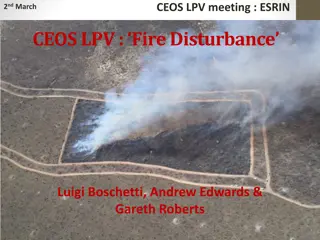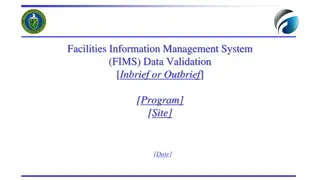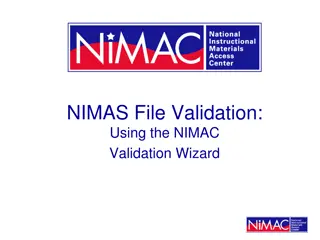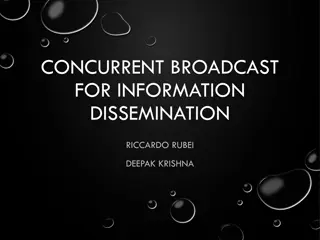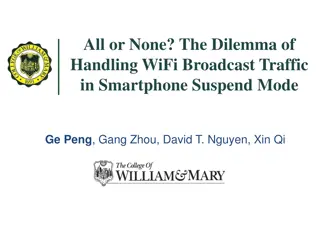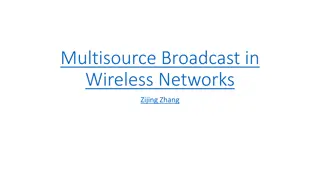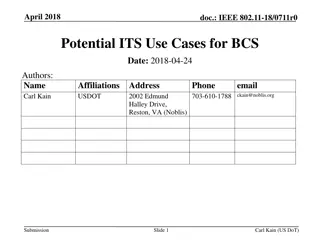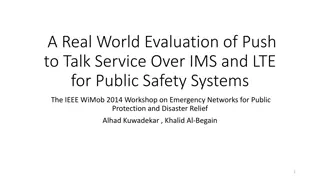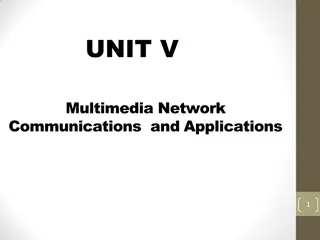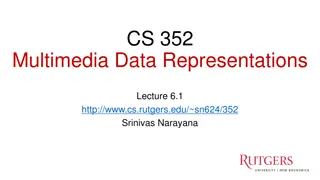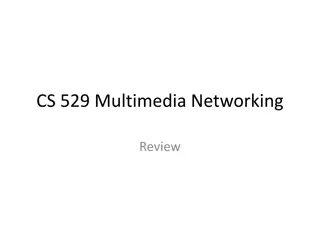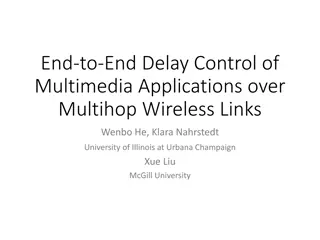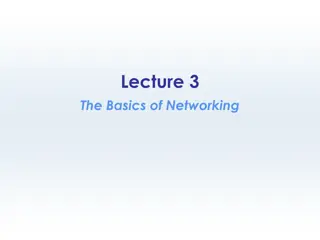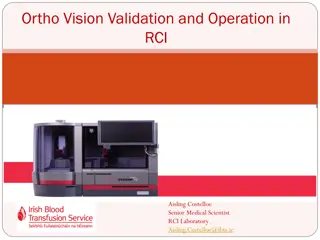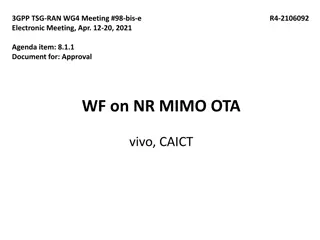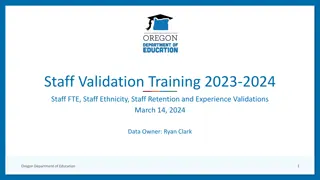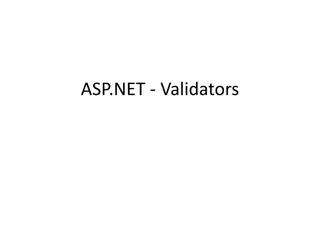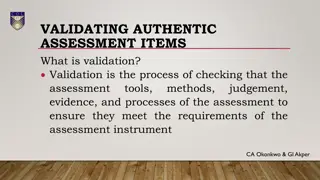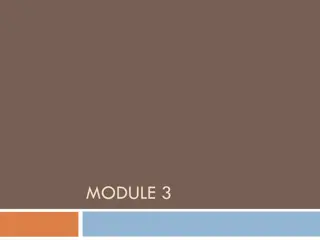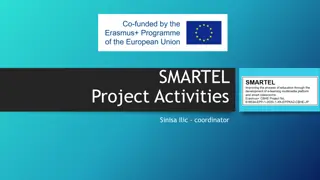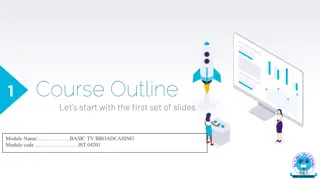Implementation and Validation of Multimedia Broadcast Multicast Service for LTE/LTE-Advanced
This study discusses the implementation and validation of a multimedia broadcast multicast service for LTE/LTE-Advanced using the OpenAirInterface platform. It explores the motivation behind enhancing multimedia capabilities in high-capacity mobile networks and the challenges related to previous research in this area. The evolution of eMBMS, network architecture of LTE, and the roles of BM-SC and eMBMS Gateway are also highlighted.
Download Presentation

Please find below an Image/Link to download the presentation.
The content on the website is provided AS IS for your information and personal use only. It may not be sold, licensed, or shared on other websites without obtaining consent from the author. Download presentation by click this link. If you encounter any issues during the download, it is possible that the publisher has removed the file from their server.
E N D
Presentation Transcript
Implementation and Validation of Multimedia Broadcast Multicast Service for LTE/LTE-Advanced in OpenAirInterface Platform Ngoc-Duy Nguyen, Raymond Knopp, Navid Nikaein, Christian Bonnet Department of Mobile Communications EURECOM Sophia Antipolis, France In Proc. of IEEE International Workshop on Performance and Management of Wireless and Mobile Networks, 2013
Motivation Higher multimedia capabilities together with the deployment of high capacity mobile network have made an immense growth in user data traffic especially multimedia content Thanks to the inherent benefits of OFDM and Single Frequency Network technologies, eMBMS in LTE can provide better services than MBMS did in 3G network.
Issues of Related Work Some researches have used WCDMA as air-interface technology rather than OFDMA that is used in current cellular networks most of them used regular simulation tools which have abstraction in some crucial parts of the network stack that can hide important issues more realistic performance evaluation and be able to implemented in a real system is in need
eMBMS overviews Still in the state of standardization until 2013 From 3GPP specification Rel-9, together with the appearance of LTE, MBMS over SFN was included in E-UTRAN under the name of Evolved MBMS (eMBMS).
Broadcast Multicast Service Center Broadcast Multicast Service Center (BM-SC): entity that connects the Content Provider and the Evolved Packet Core (EPC). Plays the role of traffic shaper and authorizing content provider/terminal request In charge of SYNC protocol to synchronize transmitted data among eNBs SYNC protocol associates a specific header to IP packets, providing Time Stamps and session information.
eMBMS Gateway located between BMSC and all eNBs Deliver MBMS user data packets to eNBs by means of IP Multicast When an MBMS session arrives, it allocates IP multicast address to which the eNB should join to receive MBMS data and maintains the IP Multicast group Performs MBMS Session control Signaling (Session Start/Stop) toward EUTRAN
Multi-cell Coordination Entity (MCE) Doing admission control and allocation of the radio resource using for MBSFN operation. Distributed MCE architecture: MCE is either part of eNB Centralized MCE architecture: a stand-alone MCE
Interfaces M1: user plane interface connecting eMBMS-GW and eNB IP multicast is used to deliver point-to-multipoint MBMS data packets over the M1 interface M2: control plane interface locates between MCE and eNBs An Application Protocol (M2AP) is defined for this interface to convey at least radio configuration data for the multi-cell transmission mode eNBs and Session Control Signaling. (not exist in distributed MCE) M3: connects MME and MCE MBMS session initiation and termination
Resource Allocation for eMBMS As specified in the standard, in one radio frame (10ms), there are up to 6 out of 10 subframes can be allocated to eMBMS services.
Resource Allocation for eMBMS Cont. Through SIB13/MCCH, the terminal is informed about the position of subframes assigned to eMBMS (also called MBSFN subframes) in one radio frame Inside one Multicast-Broadcast Single Frequency Network (MBSFN) subframe, 1 or 2 first symbols are reserved for the unicast transmission in physical downlink control channel (PDCCH), which are mainly used for the uplink scheduling grant purpose.
MBSFN area Group of cells that are synchronized to transmit the same broadcast/multicast content in a geographical region One or more services are provided in a certain MBSFN area Services are classified into different groups base on their requirement in Quality of Service
Multicast Channel (MCH) Transmit all services in one group using one modulation coding scheme The exact position and number of subframes allocated for an MCH are provided periodically in Multicast Control CHannel (MCCH) message (control information message).
Resources Allocations Steps Each service corresponds to a Multicast Traffic Channel (MTCH) eNB multiplexes these MTCHs at MAC layer Scheduling information is provided repeatedly in a MAC control element called MCH Scheduling Information (MSI) The MSI is transmitted at the beginning of an MCH
Service Reception in eMBMS The position (which frame, subframe) and configuration (repeated period, mcs) of MCCH message are conveyed in SIB13.
Implementation of eMBMS in OAI - RRC distributed MCE where the MCE resides at eNB (the actual design choice depends on the operators requirements and type of network deployment) Specified system information SIB13 and MCCH message are generated at Radio Resource Control unit in eNB side Another task of RRC is configuring the data bearers for eMBMS services at Packet Data Convergence Protocol and Radio Link Control using the parameters given in SIB13 and MCCH message
Data plane fully implement the protocol stack for eMBMS user data according to the standard at layer 2 including PDCP, RLC and MAC sublayer Packet Data Convergence Protocol (PDCP) is not used when eMBMS service is broadcasted in the E-UTRAN, therefore, PDCP in OAI operates in transparent mode.
Radio Link Control eMBMS uses the Unacknowledged Mode (UM) and one RLC-UM instant is created for one data bearer (or an eMBMS service). Segmenting the received Service Data Units into smaller packets Add RLC header in these packets and then send them to MAC via MTCH logical channels The inverse procedure is applied in receiver side to reassemble these segments.
Mac Layer the MCCH and MTCHs will be mapped onto different MCHs at this sublayer. one or more MSI control elements are periodically created for each MCH channel. MAC will create the control element MSI or get the MCCH control information and MTCH user data from RRC and RLC, respectively MAC header is generated and added to the Service Data Unit (SDU) to complete the Protocol Data Unit and send it to PHY through MCH transport channel
PHY Layer At physical layer, most of PHY procedures for eMBMs are the same with those for unicast downlink transmission.
Simulation result The hardware platform is a laptop equipped with an Intel core i7 CPU running OAI emulator and protocol stack using Linux on Ubuntu 12.04. OpenAirInterface Traffic Generator (OTG) : a realistic packet-level traffic generation tool for emerging application scenarios.
Block Error Rate According to 3GPP standard , the minimum requirement for eMBMS transmission s BLER in both FDD and TDD configuration is 1% at SNR=20.5(dB) with the R.39-1
Conclusion the implementation of eMBMS in LTE network based on release 10 of 3GPP standard on our real-time OAI platform The BLER result better than the minimum requirement about 3dB Future works The mobility management for eMBMS or the service continuity in mobile, heterogeneous environment should be investigated as well. Although eMBMS in OAI works with TDD frame configuration only in mode 3 at this moment
Progress New USIM cards are arrived and tested. Study the GTPU and GTPC protocols and the corresponding implementations in OAI. Study kernel module code, GTPUSP Todo: Study and check the network protocols in OAI Study eMBMS in OAI source code


